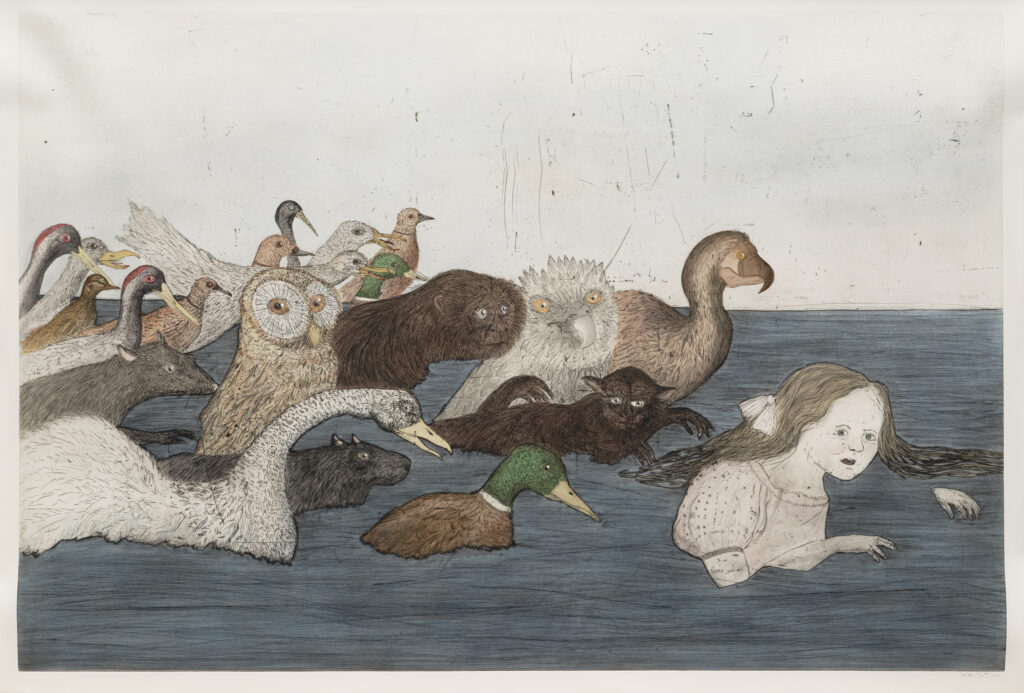
The vulnerability of youth and our relationship with the natural world—illuminated by the perils found in fairytales and folk narratives—are themes that have prevailed in Kiki Smith’s (b. 1954) printmaking. From a series of monumental prints that the artist executed in the early 2000s, Pool of Tears 2 (after Lewis Carroll) was based on the Victorian author’s own sepia-ink drawings for his manuscript, Alice’s Adventures Under Ground which was published in 1865 as Alice’s Adventures in Wonderland. The work captures a fantastical moment in the classic children’s novel when a shrunken Alice tumbles into a sea of her own tears and encounters “a Duck and a Dodo, a Lory and an Eaglet, and several other curious creatures,” all of which meet the viewer’s gaze. Included in her landmark retrospective exhibition at Modern Art Oxford in 2019, Pool of Tears 2 is a hallmark image from Smith’s mature oeuvre.
The artist had begun experimenting with printmaking in the 1970s, but it wasn’t until 1990 that the medium took equal footing with her sculpture. Marking a shift in her working method, the Carroll series forwent the complex multi-media constructions that had characterized the last decade of her work for the illustrative clarity of etching and aquatint. “With a print, I get to have an experience making it,” Smith expressed. “It takes time and it’s a struggle and at some point I get the rewards when I say it’s finished.”
To depict the animals in Pool of Tears 2 on a nearly life-size scale, Smith worked on the largest copperplate that could be accommodated by the Universal Limited Art Editions (ULAE) press. Positioning it on the dining table of her New York home, she often sat on one part of the plate while she freehand drew on another, the movement of her body leaving linear marks scattered across the sky of the composition. She chose to retain this stray evidence of her process and later added watercolor directly to the wove paper—details that emulate the worn hand-coloring of many Victorian prints.
Highly emblematic of Smith’s approach in both its subject matter and idiosyncratic technique, examples from this rare edition are held in the permanent collections of the Whitney Museum of American Art, New York; the Museum of Modern Art, New York; and the Saint Louis Art Museum.
Courtesy of Susan Sheehan Gallery, New York.
